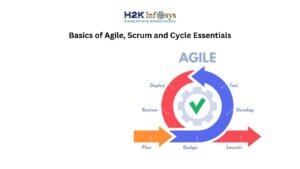Since its inception in 2001, Agile has taken the world by storm. It has proven to be a productive project management methodology, with many businesses adopting it. But is Agile the be-all and end-all for project management? Most definitely not. There are situations where Agile may not be the best approach to use for your project. In this article, you will learn when that is the case.
Before jumping into it, let’s understand what Agile is about.
What is Agile?
Agile is a project management methodology that involves splitting project deliverables into small chunks called sprints. For each sprint, there is a tangible addition to the project. This creates a system of continuous and iterative development. The project deliverables are not satisfied at a go but gradually met after each sprint.
Agile particularly emphasizes the involvement of the product owner and various stakeholders in the product development and testing phase, making it an efficient and practical approach. Also, Agile consumes less time since it does not wait until all requirements are met before the actual production kicks off. You should rather build little features, allow end-users to interface with the product, and incorporate feedback. Then, rinse and repeat. This is how Agile works.
If you are interested in knowing more about Agile and how to implement it, I’d encourage you to get an Agile Scrum Certification.
Why is Agile so Popular in the Software Development Space?
- Perfect for a fast-paced environment: One of the big advantages of Agile is that you can quickly adapt to a changing business environment. The tech space is a rapidly changing space. And to thrive, you need a system that allows you to seamlessly go with the change and not fight it. This is what Agile does. For each sprint, you can incorporate feedback from end-users and make changes for the next sprint. This way, you improve your product in the shortest possible time.
- It brings customers into the picture: Agile encourages that customers should be in the development process. In software development, the customers are basically the reason the product was built in the first place. Thus, the Agile team can measure their progress, see what customers are yearning for, and picture how the product has evolved. This is how customer satisfaction is guaranteed.
- Quick delivery: With Agile, you do not have to build the entire product before deployment. You will quickly integrate features that are needed per time. This allows the product to be used while working on even larger features. Putting it technically, Agile is perfect for Minimum Viable Products (MVPs)
When is Agile not Appropriate?
Agile may sound really nice but there are situations where it is not the best approach to take. Let’s discuss some of them.
- When the project has a fixed cost: Since agile largely encourages changing requirements, it may not be idle for a project with a fixed cost. Why is that? The changes in requirements would lead to extra costs, and when the funds are not available, it is not feasible to incorporate the changes.
- Teams work independently: Agile values team cohesion above all else. In an Agile project, the product owner and other stakeholders should work together to achieve their set goals for each sprint. In a situation where there is no strong teamwork, or even where team members work remotely, Agile may not be your best shot.
- The project does not embrace change: If your project does not have a fixed deliverable and is not susceptible to change, then Agile is not the right methodology to go for. This is because Agile encourages feedback and quick adoption to change. You must be willing to fail and learn fast. This is why Agile does not map out all the requirements from the start. It rather begins with the most crucial ones and builds upon it based on feedback.
When is Agile Appropriate for you?
Agile is appropriate for you if:
- You embrace change
- There is strong teamwork
- Everyone is willing to learn
- There is no clear cut requirements from the beginning
- Product owners are actively participating in the project.
Wrapping up
Agile is a great project methodology with immense adoption but as seen in this article, only flourishes within some project constraints. So before you begin to adopt Agile, ask yourself. Is this project flexible? Is the team willing to learn? Is there good collaboration amongst team members? Answers to this would inform your decision whether to adopt Agile or not. Meanwhile, you can master how Agile works by being a Scrum Master. To get started in this career path, you should consider getting a Scrum Master Certification.





























